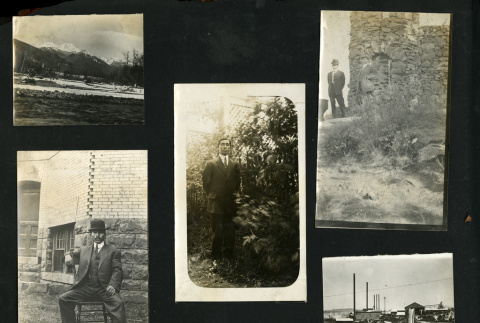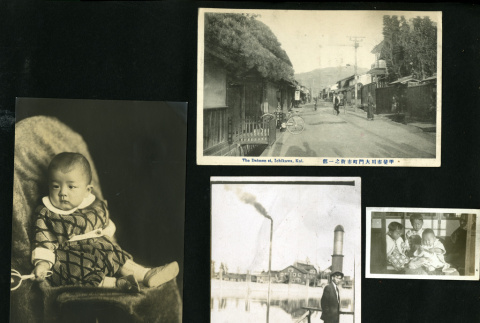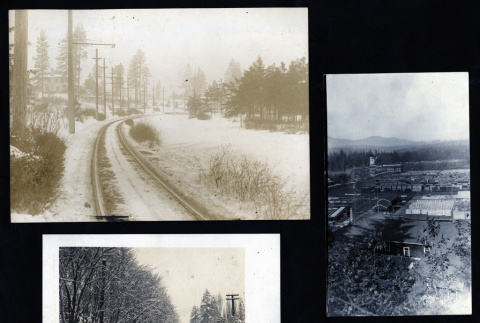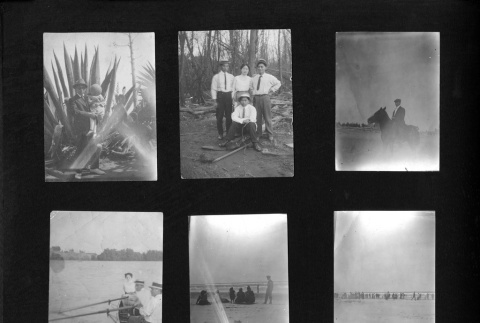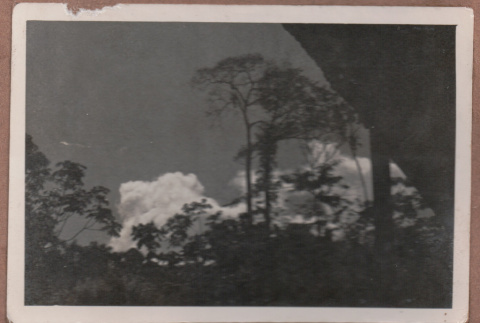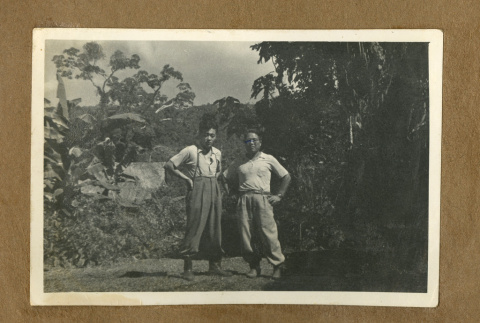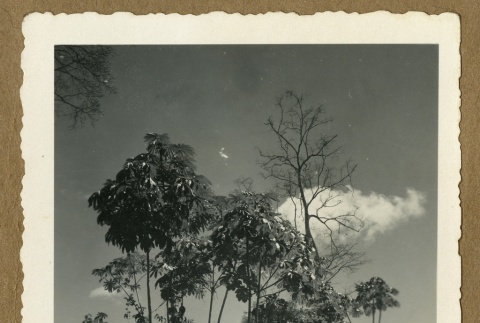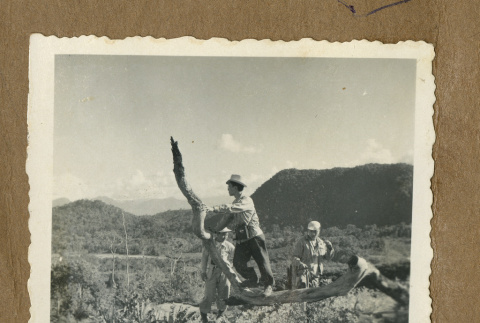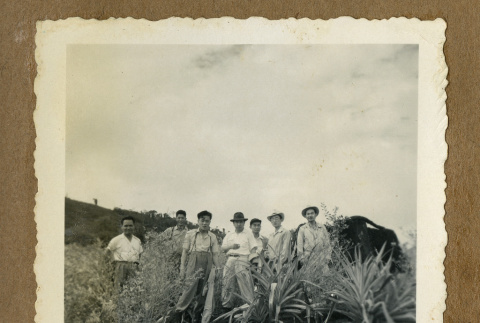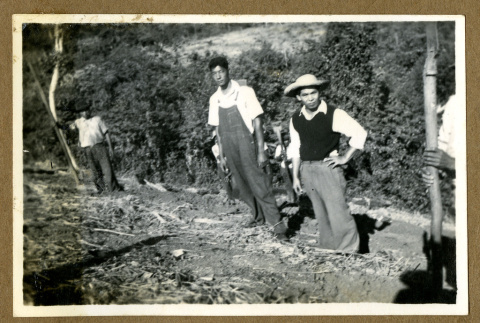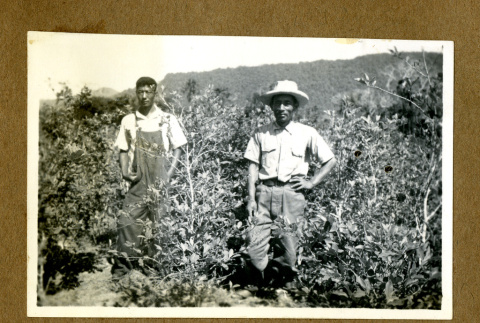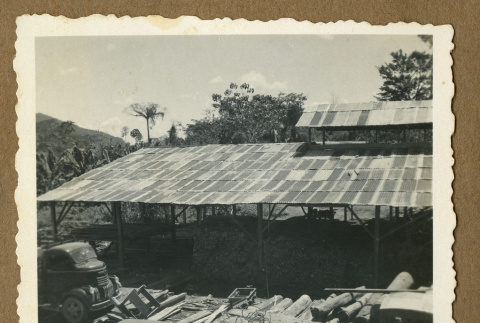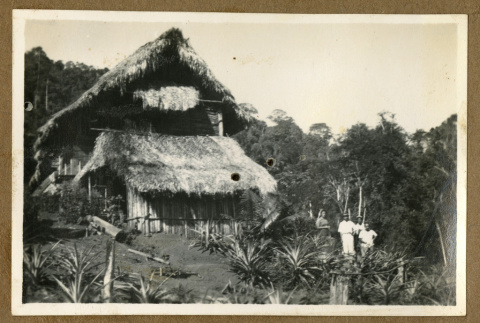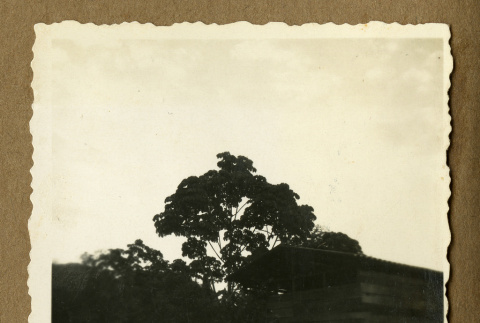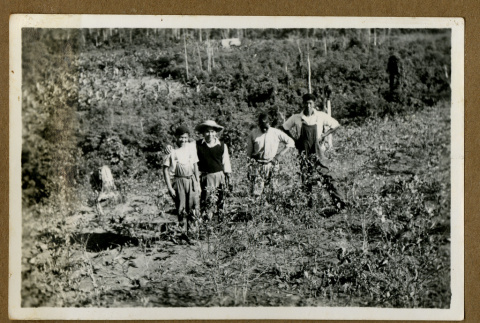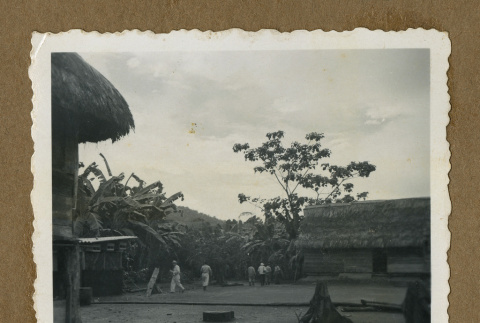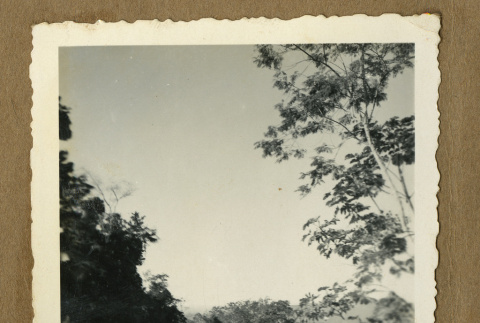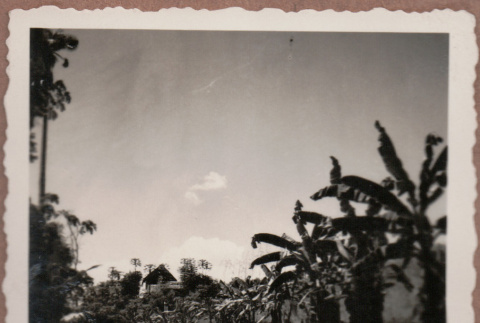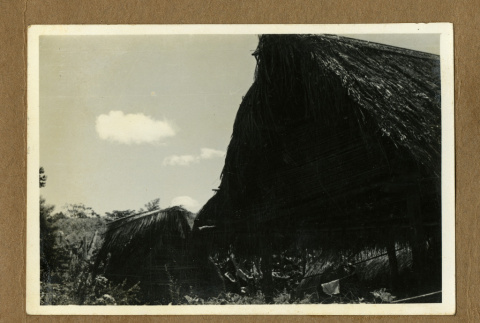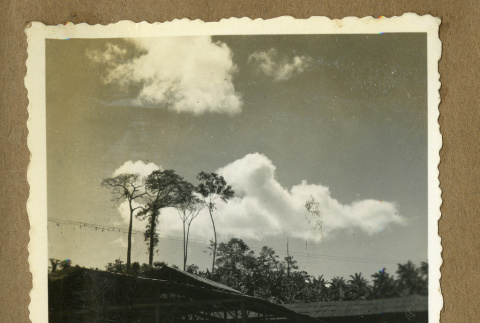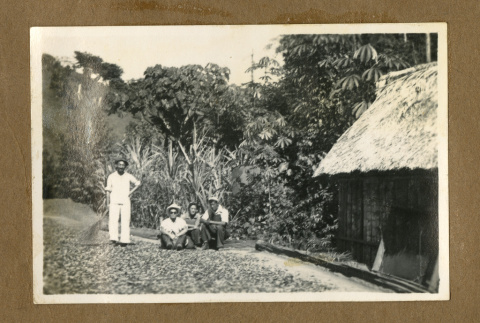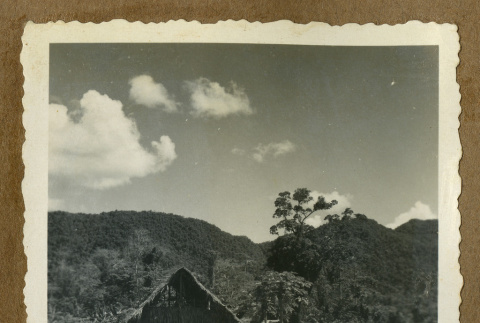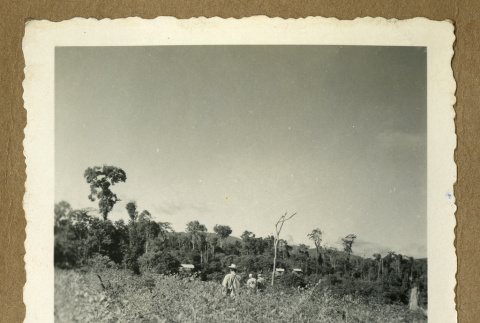Timber
Japanese immigrants (Issei) replaced Chinese workers after the 1882 Chinese Exclusion Act went into effect. Laborers were recruited by contracting companies to cut timber and work in sawmills. In rare instances, Issei women joined their husbands, living among the other workers in segregated shantytowns.
Industry and employment
(481)
Timber
(168)
168 items
168 items
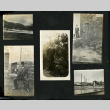
img
Japanese men in suits (ddr-csujad-25-2)
A page from an album containing Japanese family photographs. Five photographs are pasted on the page. The photographs appear to be taken in Washington in the early 1900s. Include Japanese men in suits. Also includes a photograph of a timber mill. See this object in the California State Universities Japanese American Digitization project site: jia_07_01_002
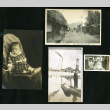
img
Japanese family (ddr-csujad-25-43)
A page from an album containing Japanese family photographs. Pasted on the page are three photographs and one postcard. A photograph of a Japanese man posing in front of a timber mill is included. The photograph appears to be taken in the early 1900s in Washington. Another photograph captures Japanese children, which was probably taken in …
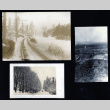
img
Scenic photographs (ddr-csujad-25-24)
A page from an album containing Japanese family photographs. Three scenic photographs are pasted on the page. Include railroads, a house cart, and lumber mills. The photographs appear to be taken in Washington in the early 1900s. See this object in the California State Universities Japanese American Digitization project site: jia_07_01_024
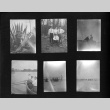
img
Japanese family (ddr-csujad-25-294)
A page from a photo album including Japanese family photographs. Some photographs are taken at the beach. One of the photographs depicts a Japanese man riding a horse. The photographs are taken in the early 1900s. Location is unknown. See this object in the California State Universities Japanese American Digitization project site: jia_10_01_002
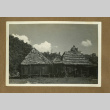
img
Plantation buildings (ddr-csujad-33-184)
Photographed are probably buildings for Japanese Peruvian plantation workers. A photo from an album: Colonisation Japonaise au Perou (csudh_cjp_0001), page 29. See this object in the California State Universities Japanese American Digitization project site: cjp_01_29_185
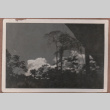
img
Plantation (ddr-csujad-33-170)
Photographed are trees in a plantation in Peru. A photo from an album: Colonisation Japonaise au Perou (csudh_cjp_0001), page 27. See this object in the California State Universities Japanese American Digitization project site: cjp_01_27_171
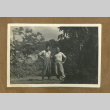
img
Japanese Peruvian workers (ddr-csujad-33-143)
Photographed are two Japanese Peruvian male workers. A photo from an album: Colonisation Japonaise au Perou (csudh_cjp_0001), page 24. See this object in the California State Universities Japanese American Digitization project site: cjp_01_24_141
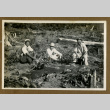
img
Japanese Peruvian lumberjacks (ddr-csujad-33-47)
A photograph of three Japanese Peruvian lumberjacks siting in a plantation. A photo from an album: Colonisation Japonaise au Perou (csudh_cjp_0001), page 10. See this object in the California State Universities Japanese American Digitization project site: cjp_01_10_047
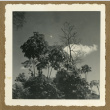
img
Plantation (ddr-csujad-33-121)
Photographed are trees in a plantation in Peru. A photo from an album: Colonisation Japonaise au Perou (csudh_cjp_0001), page 20. See this object in the California State Universities Japanese American Digitization project site: cjp_01_20_120
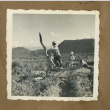
img
Japanese Peruvian workers (ddr-csujad-33-95)
Photographed are Japanese Peruvian workers in a plantation. A photo from an album: Colonisation Japonaise au Perou (csudh_cjp_0001), page 18. See this object in the California State Universities Japanese American Digitization project site: cjp_01_18_094
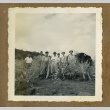
img
Japanese Peruvian workers (ddr-csujad-33-79)
Photographed are Japanese Peruvian men in a plantation. A photo from an album: Colonisation Japonaise au Perou (csudh_cjp_0001), page 17. See this object in the California State Universities Japanese American Digitization project site: cjp_01_17_079
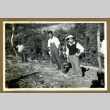
img
Japanese Peruvian workers (ddr-csujad-33-53)
Photographed are two Japanese Peruvian men standing in a plantation. A photo from an album: Colonisation Japonaise au Perou (csudh_cjp_0001), page 11. See this object in the California State Universities Japanese American Digitization project site: cjp_01_11_053
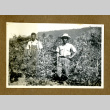
img
Japanese Peruvian workers (ddr-csujad-33-51)
Photographed are two Japanese Peruvian workers standing in a nursery. A photo from an album: Colonisation Japonaise au Perou (csudh_cjp_0001), page 11. See this object in the California State Universities Japanese American Digitization project site: cjp_01_11_051
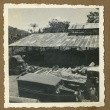
img
Logging factory (ddr-csujad-33-100)
Photographed is a logging factory in Peru. A photo from an album: Colonisation Japonaise au Perou (csudh_cjp_0001), page 18. See this object in the California State Universities Japanese American Digitization project site: cjp_01_18_099
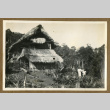
img
Japanese Peruvian house (ddr-csujad-33-62)
Photographed is probably a house for Japanese Peruvian plantation workers. A photo from an album: Colonisation Japonaise au Perou (csudh_cjp_0001), page 14. See this object in the California State Universities Japanese American Digitization project site: cjp_01_14_062
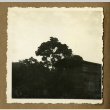
img
Plantation (ddr-csujad-33-123)
Photographed are trees in a plantation in Peru. A photo from an album: Colonisation Japonaise au Perou (csudh_cjp_0001), page 20. See this object in the California State Universities Japanese American Digitization project site: cjp_01_20_122

img
Japanese Peruvian workers (ddr-csujad-33-48)
Photographed are Japanese Peruvian workers standing in a plantation. A photo from an album: Colonisation Japonaise au Perou (csudh_cjp_0001), page 10. See this object in the California State Universities Japanese American Digitization project site: cjp_01_10_048
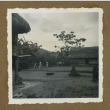
img
Plantation buildings (ddr-csujad-33-74)
Photographed are probably buildings for Japanese Peruvian plantation workers. A photo from an album: Colonisation Japonaise au Perou (csudh_cjp_0001), page 16. See this object in the California State Universities Japanese American Digitization project site: cjp_01_16_074
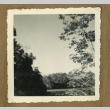
img
Plantation (ddr-csujad-33-107)
Photographed is a plantation in Peru. A photo from an album: Colonisation Japonaise au Perou (csudh_cjp_0001), page 19. See this object in the California State Universities Japanese American Digitization project site: cjp_01_19_106
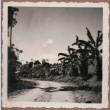
img
Road in a plantation (ddr-csujad-33-115)
Photographed is a road in a plantation in Peru. A photo from an album: Colonisation Japonaise au Perou (csudh_cjp_0001), page 20. See this object in the California State Universities Japanese American Digitization project site: cjp_01_20_114
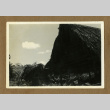
img
Japanese Peruvians, gathering (ddr-csujad-33-182)
Photographed are Japanese Peruvians gathering in front of a house in a plantation. A photo from an album: Colonisation Japonaise au Perou (csudh_cjp_0001), page 29. See this object in the California State Universities Japanese American Digitization project site: cjp_01_29_183
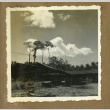
img
Logging factory (ddr-csujad-33-102)
Photographed is probably a logging factory in Peru. A photo from an album: Colonisation Japonaise au Perou (csudh_cjp_0001), page 19. See this object in the California State Universities Japanese American Digitization project site: cjp_01_19_101
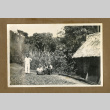
img
Japanese Peruvian workers and house (ddr-csujad-33-63)
Photographed are male Japanese Peruvian plantation workers posed in front of their house. A photo from an album: Colonisation Japonaise au Perou (csudh_cjp_0001), page 14. See this object in the California State Universities Japanese American Digitization project site: cjp_01_14_063
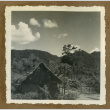
img
Plantation (ddr-csujad-33-134)
Photographed are mountains and a barn for Japanese Peruvian plantation workers. A photo from an album: Colonisation Japonaise au Perou (csudh_cjp_0001), page 23. See this object in the California State Universities Japanese American Digitization project site: cjp_01_23_132
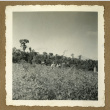
img
Japanese Peruvian workers (ddr-csujad-33-117)
Photographed are Japanese Peruvian workers in a field that appears to be a nursery. A photo from an album: Colonisation Japonaise au Perou (csudh_cjp_0001), page 20. See this object in the California State Universities Japanese American Digitization project site: cjp_01_20_116
